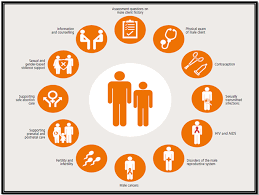The Hindu : Page 10
Syllabus : GS2 : Social Justice
The NEET-UG exam has been embroiled in controversies over the award of grace marks, allegation of paper leaks and other irregularities. The government also cancelled the UGC-NET exam after it was held, while the CSIR-NET and NEET-PG exams have been postponed.
- It explores international models and proposes a debate on whether education should be moved back to the state list

What is the historical background?
- The Government of India Act, 1935 introduced a federal structure, assigning education to provincial control.
- Post-independence, education remained in the State list of powers, allowing states autonomy over educational policies.
- During the Emergency, the Swaran Singh Committee recommended shifting education to the concurrent list to enable national policies.
- The 42nd Constitutional Amendment Act (1976) implemented this shift, controversially ratified without extensive debate.
- The 44th Constitutional Amendment Act (1978) attempted to reverse the 42nd amendment but was not passed in the Rajya Sabha.
What are international practices?
- United States: Education standards and tests are set by state and local governments; federal role focuses on financial aid and policy guidance.
- Canada: Education is entirely managed by provincial governments.
- Germany: Education legislative powers lie with the ‘landers’ (states).
- South Africa: National departments oversee education policy, while provinces implement and address local issues.
Challenges and Controversies with Centralized Education Policy
- Loss of State Autonomy: Centralized policies undermine state-specific educational frameworks, limiting states’ ability to cater to local socio-cultural and linguistic needs.
- One-Size-Fits-All Approach: National policies like NEP and standardized entrance exams (e.g., NEET) do not consider regional diversity, leading to a mismatch between policy and local realities.
- Delayed Implementation: Centralized decision-making can slow down policy execution at the state level, disrupting academic calendars and leading to administrative inefficiencies.
- Equity and Inclusion Issues: A uniform education system may fail to address the unique challenges faced by disadvantaged groups, contributing to widening educational disparities.
- Conflicting Policies: Central and state policies often clash, creating confusion and reducing the effectiveness of educational reforms.
- Reduced Innovation: Over-reliance on central directives stifles innovation at the state level, limiting the potential for context-specific educational solutions.
- Bureaucratic Control: Excessive central regulation increases bureaucratic oversight, leading to rigidity in policy implementation and reduced institutional autonomy.
Arguments for Concurrent List Inclusion
- Challenges in Primary Education: According to the ASER 2023 Report, many rural children aged 14-18 are unable to solve basic Class 3 math problems, and over 25% struggle to read fluently. This underperformance points to inadequate state-level management, making a strong case for central oversight to ensure consistent educational quality across the country.
- Promoting National Unity and Mobility: The Kothari Commission (1964-66) highlighted the importance of a unified educational system for fostering national integration and cultural exchange. Keeping education on the Concurrent List allows the central government to establish core standards while allowing states to incorporate regional nuances, promoting national unity alongside local diversity.
- Upholding Minimum Educational Standards: The Right to Education (RTE) Act, 2009, sets a baseline for quality education throughout India. Central involvement in education ensures that disadvantaged communities have access to these minimum standards, regardless of regional disparities in governance and resources.
- Harmonizing Skills and Employment Readiness: Reports by industry bodies like FICCI emphasize the need for a standardized curriculum that aligns with the national job market’s skill requirements. With education on the Concurrent List, the central government can establish broad guidelines, while states can tailor vocational and skill development programs to meet local employment needs.
- Regulation and Quality Assurance of National Institutions: Institutions like IITs, IIMs, and central universities, which draw students from all over the country, benefit from central regulation to maintain high academic standards. A concurrent approach enables a coordinated framework for accreditation and quality assurance, ensuring these institutions meet national and international benchmarks.
- Addressing Broader National Challenges: National issues such as digital literacy, environmental sustainability, and artificial intelligence require a unified approach, as outlined in the NEP 2020. The Concurrent List allows the central government to develop educational policies that address such critical challenges while providing states the freedom to contextualize these strategies based on local needs.
Arguments for State List Restoration
- Constitutional Design: Education was initially under the State List, recognizing states’ capacity to address local educational needs. The 42nd Amendment (1976) moved it to the Concurrent List, disrupting federal balance. Returning it to the State List would restore this balance.
- State-Specific Policies: States can tailor policies to local socio-cultural and linguistic contexts, improving relevance and educational outcomes. Article 350A supports primary education in the mother tongue, which states can implement more effectively.
- Policy Divergence: Central policies like NEP and NEET often conflict with state priorities, leading to inefficiencies. States need autonomy to craft policies aligned with local needs.
- Resource Control: States contribute 85% of total educational spending and should have control over regulation and resource utilization without central interference.
- Merit Determination: Centralized exams like NEET don’t account for diverse educational backgrounds. States should set their own admission criteria to holistically assess student potential.
- Improved Accountability: Greater state control enhances accountability, allowing states to align education with local development goals.
Way Forward
- Productive Dialogue: There is a need for constructive discussions to explore the possibility of moving education back to the State List.
- Tailored Policies: States should have the autonomy to design curricula, conduct examinations, and manage admissions in alignment with local needs.
- Continued Central Role: Regulatory bodies like the National Medical Commission and UGC can maintain oversight on quality standards while respecting state autonomy.
Distribution of Legislative Powers (Subjects)
Article 246 of the Indian Constitution delineates the division of legislative powers between the Union and the States. This classification is similar to the structure used in the Government of India Act, 1935. The distribution of powers is categorized into three distinct lists found in the 7th Schedule of the Constitution:
1. Union List
- The Union List currently comprises 99 subjects (originally 97) over which the Parliament holds exclusive authority to legislate.
- These subjects are of national significance and require uniform application across India, such as defence, foreign affairs, communications, currency, atomic energy, and more.
2. State List
- The State List contains 61 subjects (originally 66) over which state legislatures have exclusive powers to make laws.
- These subjects pertain to matters of local or regional importance, including police, public order, public health, and others.
3. Concurrent List
- The Concurrent List includes 52 subjects (originally 47) over which both the Parliament and State Legislatures can legislate.
- In case of any conflict between central and state laws on these subjects, the central law takes precedence.
- Subjects under this list include criminal and civil law and procedure, marriage and divorce, labour welfare, electricity, etc.
- The 42nd Amendment Act of 1976 transferred five subjects from the State List to the Concurrent List:
- Education
- Forests
- Conservation of forest and wild animals
- Weights and measures
- Constitution of all courts except the High Courts and the Supreme Court.








